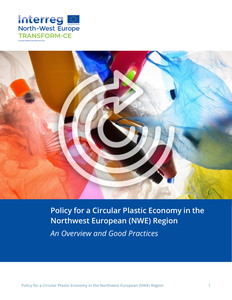The actual non-sustainable way of living has to be changed fundamentally. Despite all efforts to create a better environment, to improve building designs and to ameliorate existing buildings, often contradictory factors are faced which make it difficult to decide what the best solutions are.The discussion around the Expanded Polystyrene (EPS) house insulation is a typical example how complicated the relation between, energy efficiency, human comfort and health can be. Clearly positive effects like energy efficiency are sometimes associated with e.g. potential flaws in aesthetics caused by growth of algae, poor indoor climate, and health risks which can result in negative responses of residents when implementation of these measures is proposed. Therefore often substances are added which may cause implications with existing regulations if reused again. Smart and highly efficient products are often in contradiction with our aims to create a circular economy due to the fact that different materials are often treated with chemicals or put together in infrangible combinations. The aim of this paper is to highlight the balancing act being faced when trying to introduce new more sustainable materials and methods into the building process. Based on some examples the paper want to demonstrate that principally good intentions like improved energy savings can cause problems in other fields like environmental impact or limited re-use in a circular economy. Basic problems are described and potential approaches to minimize the risk of using building materials which might not meet the requirements for reuse in a second use phase are suggested.
DOCUMENT
Closed loop or ‘circular’ production systems known as Circular Economy and Cradle to Cradle represent a unique opportunity to radically revise the currently wasteful system of production. One of the challenges of such systems is that circular products need to be both produced locally with minimum environmental footprint and simultaneously satisfy demand of global consumers. This article presents a literature review that describes the application of circular methodologies to education for sustainability, which has been slow to adopt circular systems to the curriculum. This article discusses how Bachelor and Master-level students apply their understanding of these frameworks to corporate case studies. Two assignment-related case studies are summarized, both of which analyze products that claim to be 'circular'. The students' research shows that the first case, which describes the impact of a hybrid material soda bottle, does not meet circularity criteria. The second case study, which describes products and applications of a mushroom-based material, is more sustainable. However, the students' research shows that the manufacturers have omitted transport from the environmental impact assessment and therefore the mushroom materials may not be as sustainable as the manufacturers claim. As these particular examples showed students how green advertising can be misleading, applying “ideal” circularity principles as part of experiential learning could strengthen the curriculum. Additionally, this article recommends that sustainable business curriculum should also focus on de-growth and steady-state economy, with these radical alternatives to production becoming a central focus of education of responsible citizens. https://doi.org/10.1016/j.jclepro.2019.02.005 LinkedIn: https://www.linkedin.com/in/helenkopnina/
MULTIFILE

This document combines four reports on existing regional business support programmes for inclusion or understanding of circular economy (CE) objectives, deliverable DT3.1.2 from the transform-CE project. Besides a general overview on national and regional level, the focus is on a selection of national and regional programmes aimed at the plastics industry. After explaining the format to structure the programmes, the results for the four regions are presented: Greater Manchester (UK), Rhineland Palatinate and North-Rhine Westphalia (DE), Wallonia (BE), Central Netherlands (NL).
MULTIFILE
